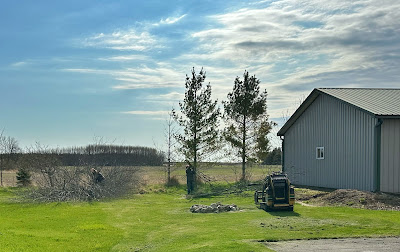Fourteen years ago I published a short observation of Wisconsin's efforts to measure if the Emerald Ash Borer had spread To the Peninsula. Inevitably, it did and the work of this non-native pest has left its mark. The landscape is now covered with dead and dying ash trees.
The Emerald Ash Borer (EAB) kills ash trees by feeding on the tree's inner bark, disrupting the flow of essential nutrients and water. The larvae tunnel under the bark, creating "S"-shaped galleries and weakening the tree's ability to transport resources to its leaves and roots. Over time, this damage can lead to canopy thinning, branch dieback, and ultimately, death.
All of our mature ash trees are toast although just as with the elm species considered extirpated three generations ago natural regeneration persists, plenty of ash seedling continue to sprout in the forest understory. So, maybe there is hope. We dodged a bullet as the trees we planted decades ago were a mixed bag of native Wisconsin conifers and hardwoods. Yes, the ash is dead or on life-support depending-upon how you view the situation but most everything else is thriving. Meanwhile, some of my neighbors have woodlots dominated by ash and it breaks one's heart to drive by it on a regular basis.
Recently we hired a contractor to remove the dead ash from immediately around the house and all the dead trees on our side of the county road that posed a threat of toppling-over, landing in the road thus creating a hazard to vehicular traffic.
A crew of four, mechanized equipment; it took a day and a half.
From around the house, most of the logs were removed, smaller trees and the slash were chipped. Along a quarter mile of road everything was dragged aside and left in the woods. I have more firewood now if I'm inclined to cut it, split it and fetch it. And boy has the view from the porch changed!








No comments:
Post a Comment